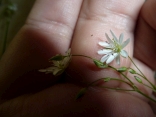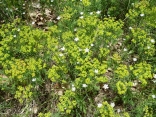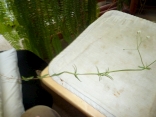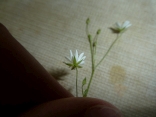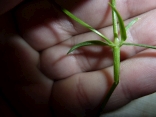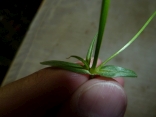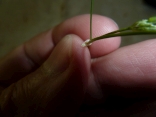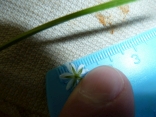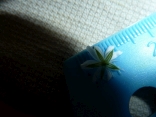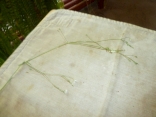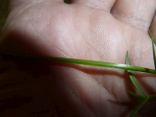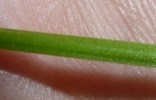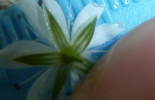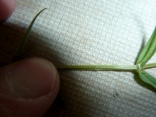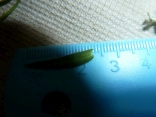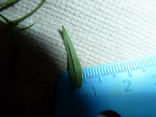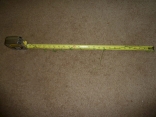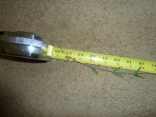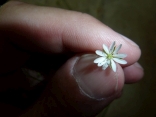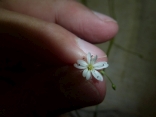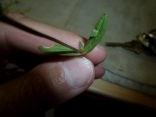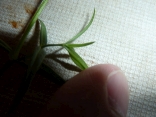To see what type of stitchwort this is, I had to go through the key in the botanical guide by Arthur Haines, Flora Novae Angliae: A Manual for the Identification of Native and Naturalized Higher Vascular Plants of New England:
- All leaves are sessile (no leave stems) and plant stems are hairless.
- Leafy bracts below the flowers are scarious (thin, dry and often paper-like and translucent) and with a green stripe down the center. See the closeup of the translucent, green-striped leafy bract below.
- Flowers are produced at the top of the stem. Sepals 2-7 mm long (in this case 4 mm long).
- Sepals are conspicuously 3-veined. See closeup image of 3-veined sepals below. Stems smooth. Leaf blades widest below the middle.
